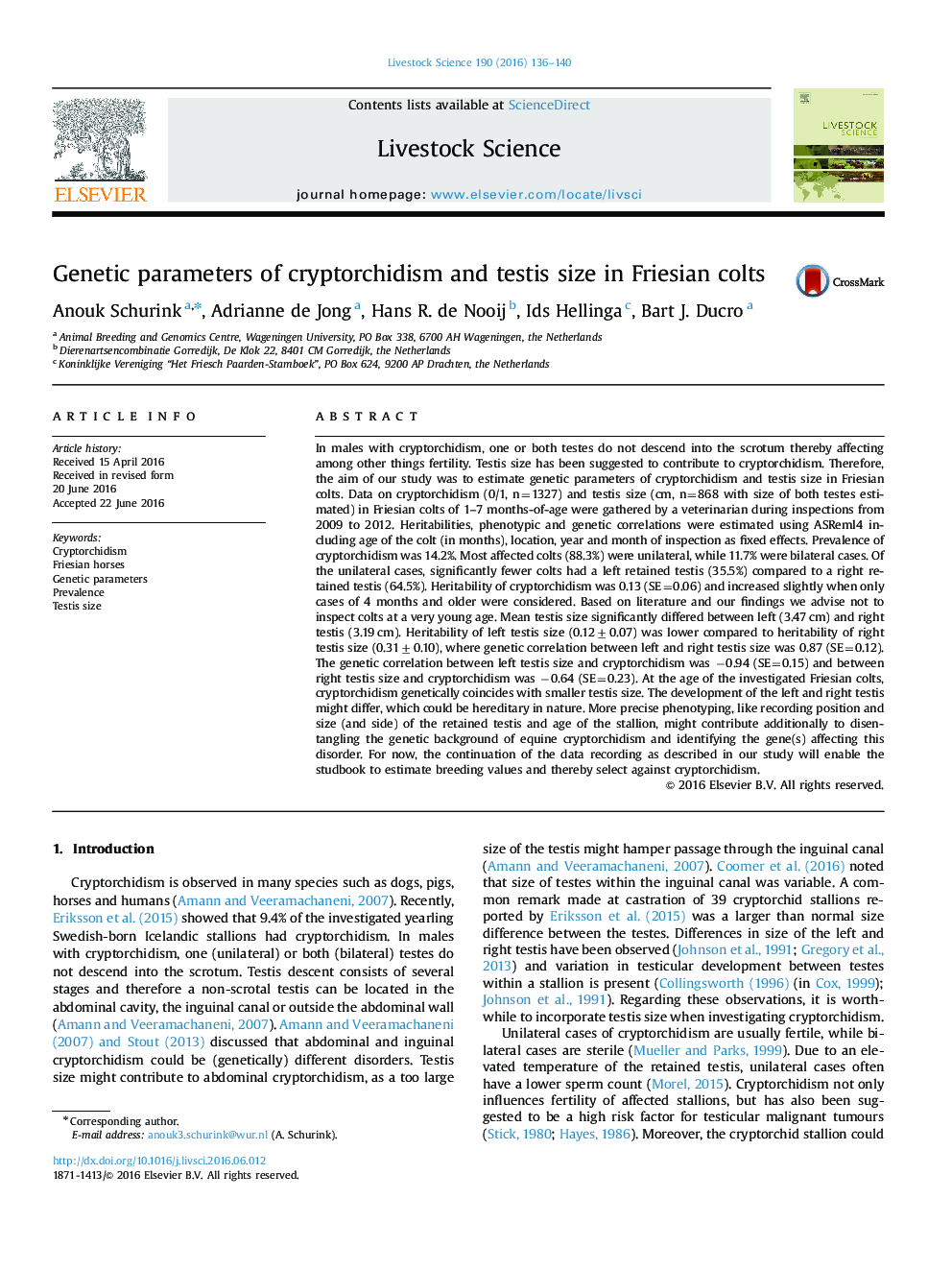| Article ID | Journal | Published Year | Pages | File Type |
|---|---|---|---|---|
| 2446862 | Livestock Science | 2016 | 5 Pages |
•Estimated prevalence of cryptorchidism in Friesian foals was 14.2%.•Heritability of cryptorchidism (absent/present) was 0.13±0.06.•Stallions should not be inspected for cryptorchidism at a very young age.•Heritabilities of testis size were 0.12±0.07 (left) and 0.31±0.10 (right).•Genetically, cryptorchidism coincides with smaller testis size, as rg was negative.
In males with cryptorchidism, one or both testes do not descend into the scrotum thereby affecting among other things fertility. Testis size has been suggested to contribute to cryptorchidism. Therefore, the aim of our study was to estimate genetic parameters of cryptorchidism and testis size in Friesian colts. Data on cryptorchidism (0/1, n=1327) and testis size (cm, n=868 with size of both testes estimated) in Friesian colts of 1–7 months-of-age were gathered by a veterinarian during inspections from 2009 to 2012. Heritabilities, phenotypic and genetic correlations were estimated using ASReml4 including age of the colt (in months), location, year and month of inspection as fixed effects. Prevalence of cryptorchidism was 14.2%. Most affected colts (88.3%) were unilateral, while 11.7% were bilateral cases. Of the unilateral cases, significantly fewer colts had a left retained testis (35.5%) compared to a right retained testis (64.5%). Heritability of cryptorchidism was 0.13 (SE=0.06) and increased slightly when only cases of 4 months and older were considered. Based on literature and our findings we advise not to inspect colts at a very young age. Mean testis size significantly differed between left (3.47 cm) and right testis (3.19 cm). Heritability of left testis size (0.12±0.07) was lower compared to heritability of right testis size (0.31±0.10), where genetic correlation between left and right testis size was 0.87 (SE=0.12). The genetic correlation between left testis size and cryptorchidism was −0.94 (SE=0.15) and between right testis size and cryptorchidism was −0.64 (SE=0.23). At the age of the investigated Friesian colts, cryptorchidism genetically coincides with smaller testis size. The development of the left and right testis might differ, which could be hereditary in nature. More precise phenotyping, like recording position and size (and side) of the retained testis and age of the stallion, might contribute additionally to disentangling the genetic background of equine cryptorchidism and identifying the gene(s) affecting this disorder. For now, the continuation of the data recording as described in our study will enable the studbook to estimate breeding values and thereby select against cryptorchidism.
